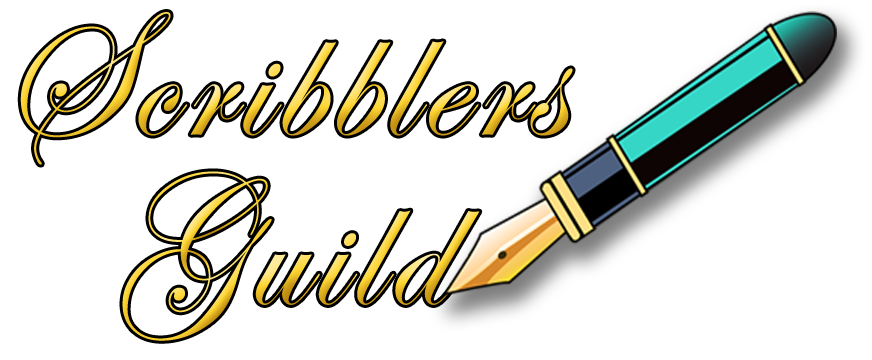Essay Series – Personal Essay
 The personal essay is an autobiographical narrative or story relating a significant personal experience that shaped or changed the writer. A good one can inspire readers and move them to ask questions or take action.
The personal essay is an autobiographical narrative or story relating a significant personal experience that shaped or changed the writer. A good one can inspire readers and move them to ask questions or take action.
The purpose of a personal essay is to introduce the writer to readers. It presents the writer as a personality, a character in a factually accurate narrative. Personal essays entertain and engage the reader with attention to literary style and technique. They’re based on truth, and they illustrate the writer’s outlook through the use of personal experiences and conclusions. Readers want to know and understand who the writer really is, not just the events that happened. The events are merely a means towards understanding the author’s viewpoint.
Since the whole point of memoir is the illustration of a deeper message or theme through the writer’s experiences, the personal essay is the ideal vehicle for memoir writers. The goal is to communicate information so that it reads like fiction, and it may include emphasis or exaggeration that magnify the story’s impact and stimulate the reader’s emotional engagement.
Personal essays allow the memoir writer a fair degree of leeway, since even though they are based on facts, the author can manipulate timelines, exaggerate incidents, and combine characters, so that the story makes sense and carries more emotional impact.
Why Write a Personal Essay?
We write personal essays, autobiographies and memoirs because the events they describe are significant to us. We want to share our experiences through our writing. Perhaps it’s an epiphany, or a quiet moment of reflection, an adventure or a life lesson, but we feel a need to contribute, to bring the audience along with us on our journey.
For this to happen, we need it to be, yes, personal, vulnerable. It must include our emotions, our conclusions, our values, beliefs and worldview. We must be willing to open up and share our inner selves with our readers.

1. Find the angle for your essay — This is the “spin” or focus you want to put on it, the theme, belief, opinion or moral value you want to convey to your readers. You need to know why you’re writing this particular piece, over and above an assignment or requirement for a job application. You need to have a personal reason for telling this particular story.
Start by finding a personal memory — a story that illustrates this deeper meaning. Life hinges on these tiny moments. We need to find and honour them with our writing.
Your essay need not be about some earth-shaking event that happened to you. The actual event may have been a tiny thing, but it should be something that created a sense of inner conflict and changed you in some way — your attitude, your way of looking at things, your behaviour — and created a fundamental shift in the way you looked at the world.
The experience should also illustrate a universal human value — failure, loss, acceptance, healing, resilience, hope, love, enlightenment, or any one of thousands of emotions and lessons we all have to learn as human beings.

2. Write about this significant moment. Decide what it was about this particular incident that made it so meaningful and try to define what that meaning is. It could be something that seemed trivial at the time but had a profound effect on you later.
Often, these moments are a point of decision, usually accompanied by strong emotion.
Examples:
- Noticing your boyfriend had a smudge on his nose and suddenly realizing you were in love with him.
- A slight tooth sensitivity that later developed into a raging infection.
- Overhearing a comment which changed a decision affecting the course of your career.
- The first time you understood that death is permanent.
These events leave lasting impressions. Though insignificant at the time, they have far-reaching effects. The emotions you write about create a strong emotional resonance within your reader, because we’ve all had situations which may not be exactly the same, but which roused the same emotions as you’re describing.
- Perhaps you fell in love with painting and subsequently based your career on becoming a world-class watercolorist.
- Or you saw an animal in pain and decided to dedicate yourself to becoming an animal rescue worker.
- Or maybe someone told you that you couldn’t write and you nearly ditched a promising future because of one critical comment, but decided to prove them wrong.
3. Focus on the emotion and describe it clearly, so the reader can experience it with you. Reflective moments, testing moments, fearful or joyful moments — all are story-worthy, because they create emotional reactions, in yourself and in your readers.
Some possible topics could be:
- Your first day on a new job
- A terrible date
- Having a butterfly land on your hand
- Feeding a chipmunk a peanut
- Finding the perfect outfit
- A troublesome person
- A beloved child
- A lost pet
- Watching crows driving away a predator
- Seeing a stunning sunset
- Hearing a song that deeply touches you
- How you feel about current politics or current events
- Incidents that happened in the parking lot or the grocery store
- How you felt about the comments that stupid woman made about your dog, or kid, or significant other
Take time to explore where the emotions came from and why the moment stays with you. It’s significant for a reason. Find the significance. Personal essays are all about sharing yourself with your reader so any event which created a strong emotional reaction in you is one that you can now relate to your reader.
For an example of a personal essay, go to: Melissa, the Dancing Mouse
![]()
Criteria — How to Build a Personal Essay
Voice And Tone — The author’s voice should be evident throughout the essay. Voice is our own particular way of speaking — our tone and diction. Tone is the author’s attitude and feelings towards the subject and diction is our word choices and speech patterns. This “voice” is what distinguishes a personal essay from an informal one.
Using Contractions — Instead of saying something like, “I am sure I did not know”, we could say, I’m sure I didn’t know”, or, “I’m sure I had no clue”, which is a bit more of an individual way of speaking.
Avoid Slang — A personal essay is still an academic exercise, so it’s inappropriate to use words or phrases like: “Y’know” or “It was literally rad!”These can confuse a reader unfamiliar with colloquialisms, so it’s best to avoid using them.
Not Too Wordy — Don’t use run-on sentences and keep your polysyllabic words to a minimum. Use clear and concrete words and sentences.
Stay On Topic — One topic per essay. Use strong points with appropriate details and ideas.
Point Of View — In a personal essay, we usually use the first person point of view, using pronouns I, me and my, (we, our and us when speaking of ourselves with other people).
![]()
Mechanics — How to Build a Personal Essay
What you need:
 1. Your Why — Your reason for writing this specific story
1. Your Why — Your reason for writing this specific story
Example: message, moral, entertainment, education, assist others, etc.
2. Your Topic — the subject of your story
Example: limiting beliefs
3. Your Focus, Spin Or Take — your opinion on the subject
Example: It’s possible to change your mind about something.
Steps
Like formal and informal essays, the personal essay follows a similar structural path:
Introduction
— major characters, time and place, thesis, what kind of story is it?
Body Paragraphs
— Supporting statements, evidence, opinions and facts
— Emotions, reactions, feelings
— Plot – Chain of logical progression from one idea or action to the next
Conclusion
— Wrap up the theme, moral or lesson
![]() 1. Create an outline. Personal essays tend to be a little more loosely constructed than most essays, usually longer than the strict five-paragraph structure of the formal academic essay. Although a personal essay tells a story, it should be organized like most essays with the following:
1. Create an outline. Personal essays tend to be a little more loosely constructed than most essays, usually longer than the strict five-paragraph structure of the formal academic essay. Although a personal essay tells a story, it should be organized like most essays with the following:
- Introduction section — the “hook”, that grabs the reader’s attention, based on the thesis statement, the point of the essay.
- Body sections — supporting evidence for the thesis statement and the key theme or themes. These would be your own experiences which illustrate your point and back up your reasoning. Body sections also note the passage of time and setting which orient and ground the reader in the story.
- Conclusion section — This is the point of the story, your reason for writing it. It’s the culmination of your thought process and the grounds for your belief. This could be a moral, or a description of your own transformation resulting from your experience.
![]() 2. Start with an opening scene. This introduces the key characters as well as introducing the main theme. It can provide a personal statement that you plan on proving in the body of your essay, or pose a story question or concern, which piques reader curiosity and isn’t satisfied until the conclusion section.
2. Start with an opening scene. This introduces the key characters as well as introducing the main theme. It can provide a personal statement that you plan on proving in the body of your essay, or pose a story question or concern, which piques reader curiosity and isn’t satisfied until the conclusion section.
Begin with a specific scene that illustrates the central question or theme. It could begin with a fight that shows the status of a relationship, an event that caused you to question the status quo, or the first inkling you had that something was about to change.
In fiction, this is called the inciting incident. It’s a defining moment which changes circumstances, such that you can’t go back to the way things were. There’s a fundamental change in how you see the world. It may not be monumental, but it’s significant.
![]() 3. Fill in your body paragraphs. Use description and sensory details to help the reader feel immersed in the scene. Be specific about the sequence of events and the details in order to lead the reader to your main point. Provide evidence to support your opinion where necessary.
3. Fill in your body paragraphs. Use description and sensory details to help the reader feel immersed in the scene. Be specific about the sequence of events and the details in order to lead the reader to your main point. Provide evidence to support your opinion where necessary.
![]() 4. Use your own unique patterns of speech. Your point of view may be similar to others, but aspects of it are uniquely your own. Word choices, subject matter, syntax and tone all contribute to your author’s voice. This is where the emotional content is conveyed to the reader. Your essay might be contemplative or reflective, humorous, conversational, even angry and righteous. It might be more like a conversation with yourself as you question your own assumptions and beliefs. Vivid and powerful description of settings, sensory impressions, physical reactions all help engage readers and make them feel involved in the story.
4. Use your own unique patterns of speech. Your point of view may be similar to others, but aspects of it are uniquely your own. Word choices, subject matter, syntax and tone all contribute to your author’s voice. This is where the emotional content is conveyed to the reader. Your essay might be contemplative or reflective, humorous, conversational, even angry and righteous. It might be more like a conversation with yourself as you question your own assumptions and beliefs. Vivid and powerful description of settings, sensory impressions, physical reactions all help engage readers and make them feel involved in the story.
![]() 5. Character development. Characters need to be thought through and portrayed as more than cardboard cutouts. You can even include dialogue, but keep it to a minimum.
5. Character development. Characters need to be thought through and portrayed as more than cardboard cutouts. You can even include dialogue, but keep it to a minimum.
![]() 6. Plot and Chain of consequences. Your essay should also have a sense of plot. The point of the essay is to describe a significant moment, so you need to pace the events of the essay so that the significance of the moment is not lost. Plotting a beginning, middle and end to the story is usually done chronologically, so the reader can follow your timeline. Paragraphs should follow each other in a logical chain of cause and effect, leading the reader to your conclusion.
6. Plot and Chain of consequences. Your essay should also have a sense of plot. The point of the essay is to describe a significant moment, so you need to pace the events of the essay so that the significance of the moment is not lost. Plotting a beginning, middle and end to the story is usually done chronologically, so the reader can follow your timeline. Paragraphs should follow each other in a logical chain of cause and effect, leading the reader to your conclusion.
![]() 7. Finish up with your conclusion. Summarize what you learned from your experience and what message you hope to pass on to the reader. No matter how difficult or unsettling your experience may have been, ending on a generally positive note can help it feel more inspirational and hopeful.
7. Finish up with your conclusion. Summarize what you learned from your experience and what message you hope to pass on to the reader. No matter how difficult or unsettling your experience may have been, ending on a generally positive note can help it feel more inspirational and hopeful.
![]() 8. Theme or point. The theme of your essay should uncover a hidden truth, reveal uncomfortable realizations, and go beyond the basic events and happenings. The essay isn’t about the stuff that happens. It’s about the thought processes that lead to the discovery of oneself.
8. Theme or point. The theme of your essay should uncover a hidden truth, reveal uncomfortable realizations, and go beyond the basic events and happenings. The essay isn’t about the stuff that happens. It’s about the thought processes that lead to the discovery of oneself.
Next week, we’ll cover blog posts and the proper way to present an argument. We’ll go through a series of questions and exercises to help you create more focused and convincing arguments, messages and stories.
Happy Writing!

If this information is useful, or you have anything you’d like to add, please leave a comment below.
Related Posts:
Beverley Hanna
Trained as an artist in the late 1960’s and early 1970’s, I was one of the first creatives to be employed in the computer graphics industry in Toronto during the early 1980’s. For several years, I exhibited my animal portraiture in Canada and the U.S. but when my parents needed care, I began writing as a way to stay close to them. I’ve been writing ever since. I run a highly successful local writer’s circle, teaching the craft and techniques of good writing. Many of my students have gone on to publish works of their own. I create courses aimed at seniors who wish to write memoirs, with a focus on the psychology of creatives and the alleviation of procrastination and writer's block.


3 Comments
Pingback:
Pingback:
Pingback: